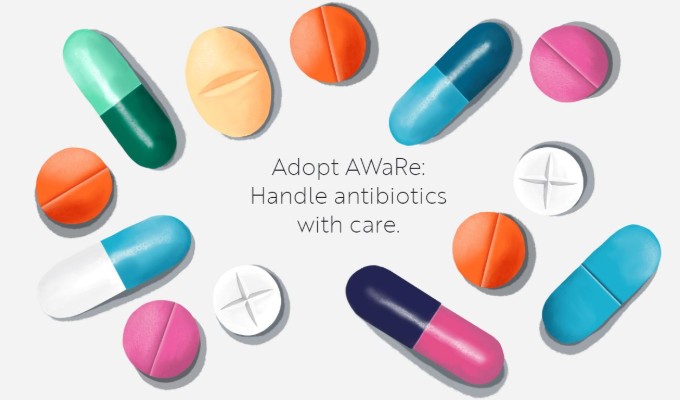In 2017, WHO introduced the AWaRe (Access, Watch, Reserve) classification of antibiotics in its Essential Medicines List. The classification was further reviewed and expanded to include the most available antibiotics in 2019. AWaRe is a useful tool to enhance optimal use of antibiotics, reduce AMR (antimicrobial resistance), and ensure access. It aims to help prescribers, pharmacists, antibiotic stewards and policy makers to address the AMR challenge.
Antibiotics are not like other medicines – they are critical for human health and they are vulnerable
Dr. Mariângela Batista Galvão Simão, WHO’s Assistant Director-General, Medicines, Vaccines and Pharmaceuticals
The AWaRe classification groups antibiotics into the following categories:
ACCESS – antibiotics that represent first or second-line for empirical treatment of common infectious syndromes based on a systematic assessment of the available evidence and that have a favorable safety profile with a low propensity to further aggravate AMR. All ACCESS antibiotics are part of the EML core list, meaning that these antibiotics should be widely available in all settings (while still making efforts to ensure their appropriate use). Many penicillins belong to this class.
WATCH – antibiotics that present a higher potential to negatively impact AMR. Some Watch group antibiotics are also included in the EML core list since they are the most effective options for a limited group of well-defined clinical syndromes, but their use should be tightly monitored and restricted to the limited indications. Fluoroquinolones, which are unfortunately commonly used in many settings, belong to the WATCH group as their use should be avoided for indications for which they are no longer first or second choice.
RESERVE – “last-resort” antibiotics, which have activity against multi (MDR)- or extensively (XDR) resistant bacteria, and therefore represent a valuable, non-renewable resource that should be used as sparingly as possible. Some of the newly approved antibiotics (e.g., ceftazidime-avibactam) fall into this class, as do some of the older “rediscovered” antibiotics (e.g., polymyxins).
DISCOURAGED antibiotics – this fourth category – mostly including antibiotic combinations – was developed in the 2019 EML update. Some antibiotics, such as certain fixed dose combinations of antibiotics, do not have any reasonable indications for the treatment of infectious diseases in humans and may negatively impact AMR and patient safety. Examples include ceftriaxone/sulbactam, ofloxacin/ornidazole, etc.
The overall goal of AWaRe classification is to reduce the use of WATCH Group and RESERVE Group antibiotics (the antibiotics most crucial for human medicine and at higher risk of resistance), and to increase the use of ACCESS antibiotics where availability is low.
EMDEX Updates:
In line with the WHO recommendations, we are adopting the AWaRe classification and updating EMDEX database to align with the new antibiotic groups. The updates will be available in EMDEX mobile app soon and in the coming edition of EMDEX Prints.
In addition, EMDEX is being updated based on the current edition of Nigeria’s Essential Medicines List (NEML 2020 ed.) and the newly launched children’s edition (NEMLc 2020 ed.).
Sources:
- AWaRe_policy_brief.pdf. (n.d.). Retrieved May 9, 2021, from https://adoptaware.org/assets/pdf/aware_policy_brief.pdf
- WHO | WHO releases the 2019 AWaRe Classification Antibiotics. (n.d.). WHO; World Health Organization. Retrieved May 9, 2021, from http://www.who.int/medicines/news/2019/WHO_releases2019AWaRe_classification_antibiotics/en/

